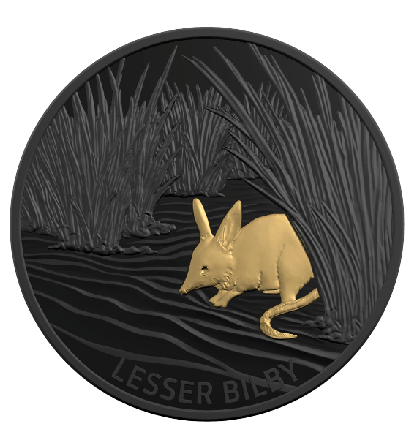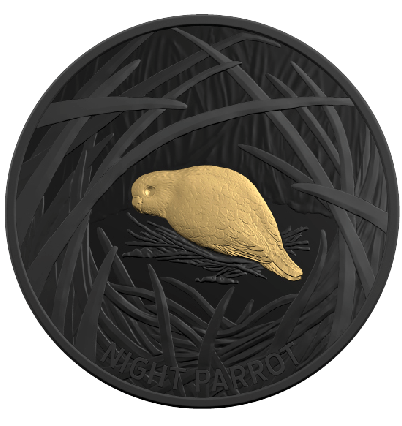Mint condition

The Royal Australian Mint has produced a new coin series called Echoes of Australian Fauna. Made from silver, plated in black nickel and then decorated with gold-plated images of extinct or endangered native species, the coins feature a thylacine (Tasmanian tiger), night parrot and lesser bilby.
The last known thylacine, called Benjamin, died in 1936 at Hobart Zoo. The lesser bilby inhabited our deserts and was documented only a few times between its 1887 discovery and extinction in the 1950s. The night parrot was until recently thought to be extinct, with no confirmed sightings for more than 100 years (see AG 134).

The coins’ designer and sculptor, Bronwyn King, is a graduate of The University of Newcastle’s Bachelor of Natural History Illustration degree, with which Australian Geographic has a long relationship, sponsoring the university’s annual Natural History Illustration prize. The degree covers botanical and scientific illustration, field studies and more. “It really sets you up for working in the industry,” Bronwyn says.
“For example, after graduating I illustrated a spread of gum blossoms for Australian Geographic.” (See AG 96.)

The design begins with the Mint’s product developers. “They give us the details and theme of the set and a rough idea of what they’re after,” Bronwyn explains. “With this set they wanted an intricate design with a partially obscured animal to highlight their elusive nature. It was then a process of researching to find the correct habitat for the animal and one that will also work to create beautiful intricate patterns that camouflage the subject.”
After the concept was approved, the sculpt was next. “While we still sometimes use plasticine or plaster at a larger scale, which then gets scanned into a digital file, for this series I did it completely digitally using multiple 3D-sculpting programs.
Once the sculpt was approved, the 3D model was sent to the engraving team who cut the design into metal to create the master tool.”
With photographic references of the featured animals hard to find, Bronwyn used archival images and footage to gauge the shape and size of each before drawing it in-situ.

“From concept to sculpt, the process took about two weeks.” Next came engineering, die polishing and plating. “Each have different requirements.
For example, while we wanted the animal to be as small as possible and hidden in its habitat, there are minimum size restrictions for the gold-plating mask, and we also need to consider legibility at such a small scale. The coin is less than 4cm wide and the depth of the sculpt is only 0.3mm, so there’s a lot of information to get into a very small space.”
For more on making a coin, visit the Royal Australian Mint.
The lesser bilby coin is available to buy now from the Royal Australian Mint.

